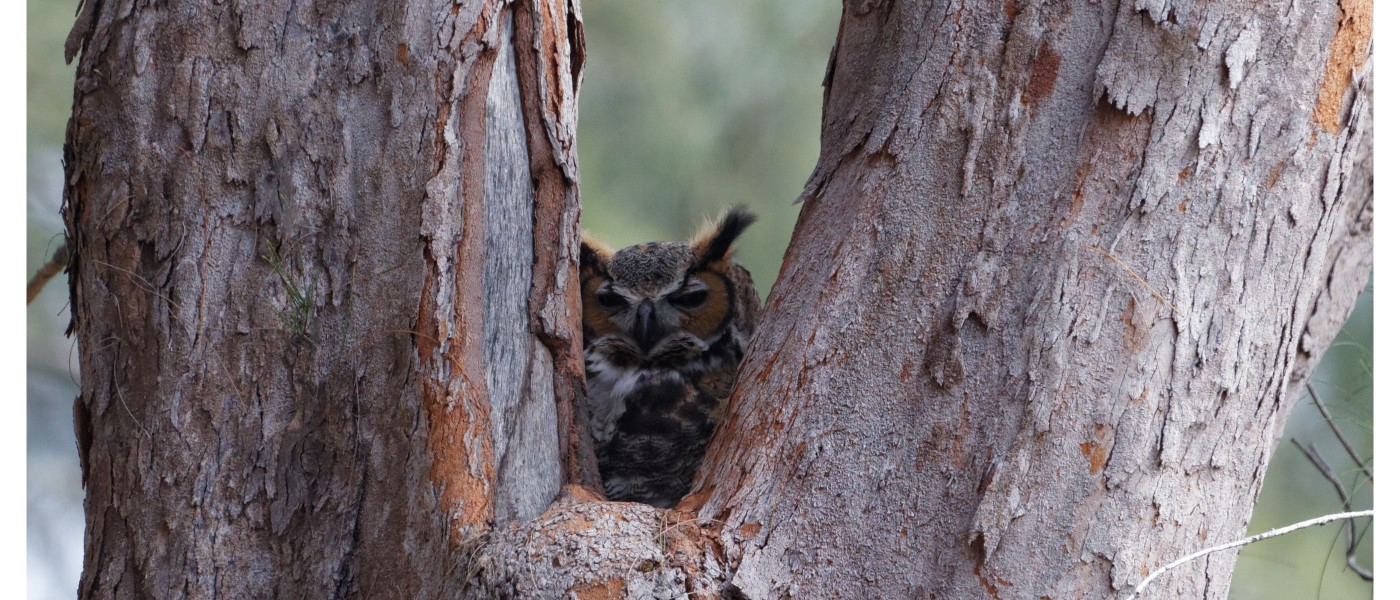Birds of Brooklyn: Great Horned Owl
Owls have a special place in the heart of any birdwatcher. There is a certain mystery about them as they are hard to find and tend to appear at night. But the great horned owl (Bubo virginianus) is a common year-round resident owl in the New York City area. Brooklyn has at least two pairs, one in Prospect Park and one in Greenwood Cemetery. Queens has more as they reside in Jamaica Bay and Alley Pond Park. The Bronx, when the landfill was open, was known as the owl capital of the city and still has a few pairs. Just outside of the city, it is very common with some 200 pairs on Long Island.
During the day, the great horned owl is usually resting and very quiet. Its neutral plumage blends in with its surroundings. Even its large size (two feet tall!) does not give it away—it is still able to look just like the tree or depression it is roosting in.
At twilight and again in the early morning the great horned owl becomes very active and starts to hunt. It finds its favorite food—mice, rats, frogs, squirrels and sometimes other birds—with its excellent eyesight and hearing. Like other owls, the great horned owl has binocular vision made for keying in on prey. It also has a facial disc that captures sound and directs it to its ears so prey can be located completely by sound. The talons of the great horned owl are like razors made to kill prey and then rip them apart. It has over a 4-foot wingspan, yet its flight is completely silent. Its prey has virtually no chance of escape. It is a top of the line predator with no natural enemies.
The great horned owl is probably the first bird to start to breed in the eastern United States. Pairs don’t build a nest but instead take over an old red-tailed hawk nest or a squirrel drey or find a natural depression in a tree. Two young are produced and nurtured by the parents for about three months. After that, the young are on their own. Great horned owls mate for life and can live for twenty years with the oldest recorded at 28 years of age.
In mythology, the owl represents both good and bad news for humans. The “wise old owl” was credited with giving olive branches to the goddess Athena who passed them along to the people of a new and prosperous city in Greece. The people planted the branches which lead to a bounty of olives and olive oil. The city was then named for her, Athens. On the other hand, according to Roman mythology, it is said that if an owl appears in the middle of the day in a central market place and starts to call, the ruler of the country will be dead within three days. Both Julius Caesar and Caesar Augustus seem to have met that fate. Let us hope that all our encounters with owls will be good and enable us to appreciate their beauty and remarkable skills.
The Birds of Brooklyn series looks at some of the most familiar and fascinating birds that call Kings County their habitat.


